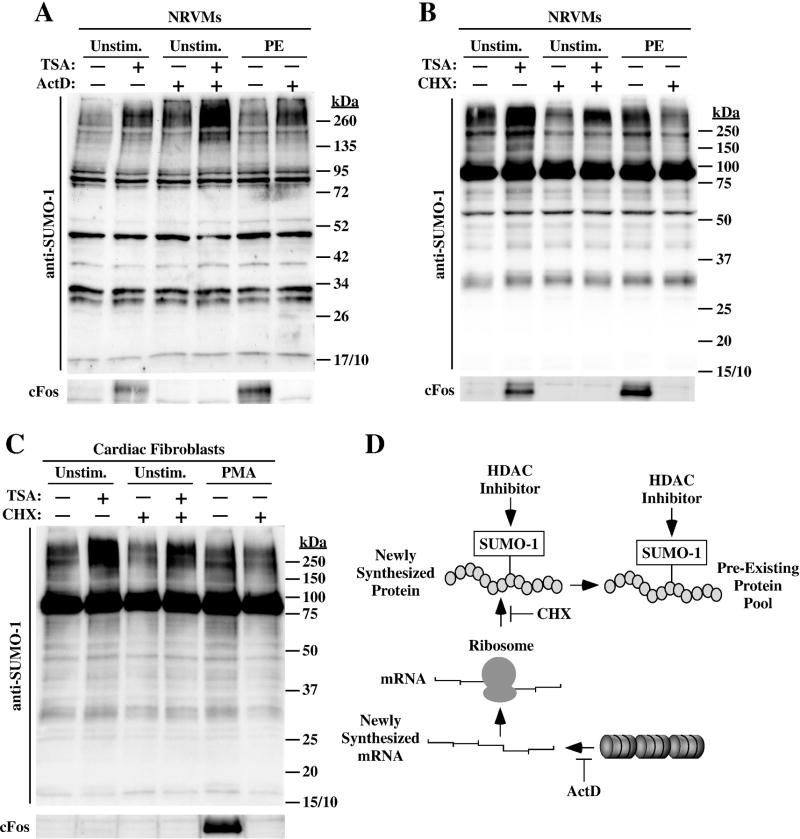Fig. 5.
Class I HDAC inhibitor-mediated SUMOylation does not require de novo gene transcription or protein synthesis. (A) NRVMs were pre-treated with actinomycin D (ActD) for two hours to block gene transcription, and were subsequently exposed to either vehicle (DMSO; -) or TSA for 4 hours. As controls, some cells received PE for two hours in the absence or presence of ActD. Protein homogenates were immunoblotted with anti-SUMO-1 antibody. In parallel, cFos protein was assessed to confirm that ActD efficiently inhibited gene expression. (B) NRVMs were pre-treated with the protein translation inhibitor cycloheximide (CHX) for 30 minutes, and were subsequently exposed to vehicle (DMSO; -) or TSA for 4 hours. Immunoblotting was performed with anti-SUMO-1 antibody or cFos antibody to confirm CHX efficacy. (C) Adult rat ventricular fibroblasts were serum-starved for 24 hours, pretreated with CHX for 30 minutes, and exposed to DMSO or TSA for 4 hours. As controls, some cells received PMA for 2 hours in the absence or presence of CHX. ActD did not block TSA-mediated SUMO-1-ylation (A), and CHX only partially reduced SUMO-1 conjugation in cardiac myocytes (B) and fibroblasts (C), suggesting that HDAC inhibition stimulates SUMOylation of a pre-existing protein pool (D).

